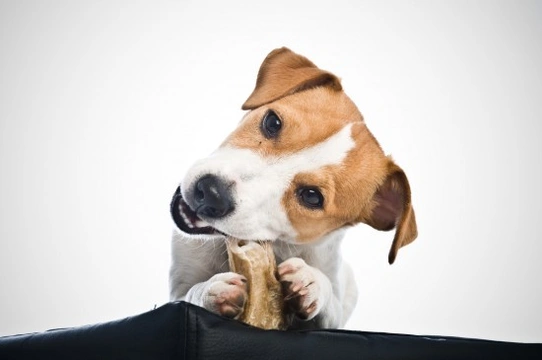Pets
Pets for studWanted petsBreedersAccessories & services
Knowledge hub
Support
Support & safety portal
The do’s and don’ts of giving treats to your dog
Very few dog owners do not give their dogs a supplemental treat, reward or scrap of food now and then outside of their usual meals, whether this be simply to give your dog something nice or as part of a structured training programme as a positive reinforcement reward.
This is perfectly fine and in many ways, giving treats to your dog can be highly beneficial in rewarding good behaviour, for getting your dog’s attention, or simply to make them happy. It is important to give treats to your dog responsibly, and in a way that is beneficial to them, but all too easy to get things wrong and inadvertently cause problems such as by encouraging obesity, teaching bad habits, or accidentally teaching your dog to beg for scraps.
If you are keen to get the balance right and make sure that you are going about things in the right way, read on to learn some of the important do’s and don’ts to bear in mind when giving treats to your dog.
Don’t substitute treats for meals
Just as you should carefully monitor the size and frequency of your dog’s meals to ensure that it matches their needs, so you should pay just as much attention to the quantity and calorific value of the treats that you give. Do not give your dog so many treats that they will neglect to eat their main meals, or are overall consuming too many calories when treats and meals are combined. Your dog should receive a minimum of 90% of their daily calorie intake from their actual food, and 10% or less from supplemental food or treats.
Do count calories
Different types of treats have different calorie values; giving your dog a couple of cubes of his regular kibble outside of mealtimes will have a great deal fewer calories than feeding your dog a piece of fatty steak or a few crisps. Work out the calories within the products that you are offering as a treat, in order to ascertain how much or how many of them you can give him per day without making him fat!
Do be wary of inadvertently feeding toxins
If you wish to feed your dog scraps of your own food or the leftovers from your own meals as a treat, it is vital to make sure that you have checked off all of the ingredients, plus anything else that the food may have come into contact with, as suitable for dogs. Remember that many human foods such as grapes, raisins, onion, garlic and nuts can be toxic to dogs, and that many foods are prepared in oils or marinades that can have long and complex ingredient listings.
Do know what is in your dog treats
Any packet of dog treats that is bought from a shop will be theoretically suitable for feeding to your dog, but in order to make them desirable and palatable to dogs, many of these will be high in salt or sugar, which can be detrimental to your dog’s health. Actively look for treats with a clear and easy to understand ingredient listing, and go for things that are as natural as possible and not packed full of colourings, flavourings or sugar and salt.
Don’t go overboard with treats
Give your dog one or two treats at a time and ration them out. Do not take more treats out of a packet than you intend to give to your dog, and never feed treats in handfuls.
Do teach good manners
Make sure that your dog is never rewarded for jumping up, snapping or snatching treats by teaching them good manners and how to gently take a treat from your hand. Train your dog to “sit” when a treat is offered, and to wait until you give it to them, and to take it gently, being mindful of your fingers.
Do use treats for motivation
It may seem counter-productive to use treats to motivate an overweight dog to exercise, but when used sparingly, low-calorie treats can actually prove helpful to encourage sedentary dogs or those that are highly food-motivated to go the extra mile... or metre!
Don’t reward begging
Many dogs have a finely-tuned radar for treats and food, and the sound of a jar opening, a bag rustling, or even simply someone getting up to walk to the kitchen can lead to the sudden appearance of a sharp-eyed canine winding themselves around your legs and clamouring hopefully for a reward. This type of behaviour can be very annoying and of course, demonstrates bad manners in the dog, and it is important to keep your dog guessing where rewards are concerned and not teach them that there is a constant stream of treats available every time they ask.
Do look for treats that do good
Just because a treat is given as a reward doesn’t mean that it has to be the equivalent of a candy bar! There are a wide range of different types of dog treats available, some of which are designed to actually have a supplementary beneficial effect on your dog’s health. Look for treats that are good for the teeth, or rich in vitamins and minerals, and choose these over treats that are simply designed to please the palate.
Do remember that you are the best treat of all
Remember that giving a food reward is not the only way to treat or reward your dog. Attention and praise from you, a fun game, a favourite toy, or taking the time to do something that your dog enjoys are all equally as rewarding as giving food, and can help to strengthen your bond with your dog too.



